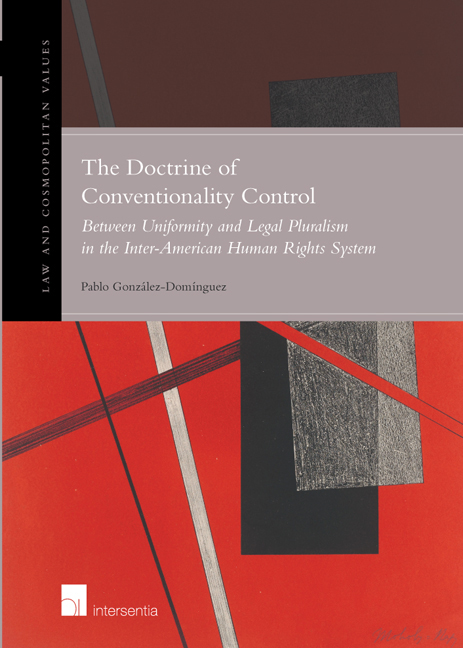 The Doctrine of Conventionality Control
The Doctrine of Conventionality Control Published online by Cambridge University Press: 11 October 2018
THE COURT AND ITS CIRCUMSTANCES
In the foreword to Decisive Moments in History, Stefan Zweig reflected on how unforgettable moments in history are linked to facts that precede human actions in crucial moments, for “all excitement needs time for preparation, and every real event must undergo development”. Zweig’ s reflection applies to those moments of humanity that radically change the course of history (as those brilliantly narrated in his book), yet it also applies to those unforgettable moments that occur in the lives of individuals, societies and governments. Since from time to time, among the vast number of insignificant and mundane things that occur in life, myriad events come together in narrows spans of time, allowing individuals to take actions that – even unknown to them – alter the course of history in concrete contexts. At the risk of sounding a bit too dramatic, this might be what happened in the year 2006 in the context of the Inter-American System of Human Rights, when the Inter-American Court of Human Rights created the doctrine of conventionality control in the case of Almonacid Arellano and others v. Chile.
The creation of this doctrine was precisely the result of a decision made by individuals searching for practical solutions to concrete problems, but who were also acting in a propitious context, and with ambitious future goals in mind. Paraphrasing José Ortega y Gasset, the inclusion of paragraph 124 in Almonacid, and its use in subsequent cases, was the result of “the Court and its circumstances”. Because the doctrine of conventionality control might never have been included in the body of the decision in Almonacid; or it might have passed as an extravagant occurrence of one its judges and a trusted clerk; or it might have been used only in cases of transitional justice against Chile and Peru, and then abandoned. But none of these things happened, and now conventionality control is a well-settled doctrine in the Court's case law. Why was this doctrine created and why is it still in use? To the extent that this book allows us to determine, the emergence and normative strength of conventionality control is intimately connected with four main factors.
To save this book to your Kindle, first ensure [email protected] is added to your Approved Personal Document E-mail List under your Personal Document Settings on the Manage Your Content and Devices page of your Amazon account. Then enter the ‘name’ part of your Kindle email address below. Find out more about saving to your Kindle.
Note you can select to save to either the @free.kindle.com or @kindle.com variations. ‘@free.kindle.com’ emails are free but can only be saved to your device when it is connected to wi-fi. ‘@kindle.com’ emails can be delivered even when you are not connected to wi-fi, but note that service fees apply.
Find out more about the Kindle Personal Document Service.
To save content items to your account, please confirm that you agree to abide by our usage policies. If this is the first time you use this feature, you will be asked to authorise Cambridge Core to connect with your account. Find out more about saving content to Dropbox.
To save content items to your account, please confirm that you agree to abide by our usage policies. If this is the first time you use this feature, you will be asked to authorise Cambridge Core to connect with your account. Find out more about saving content to Google Drive.